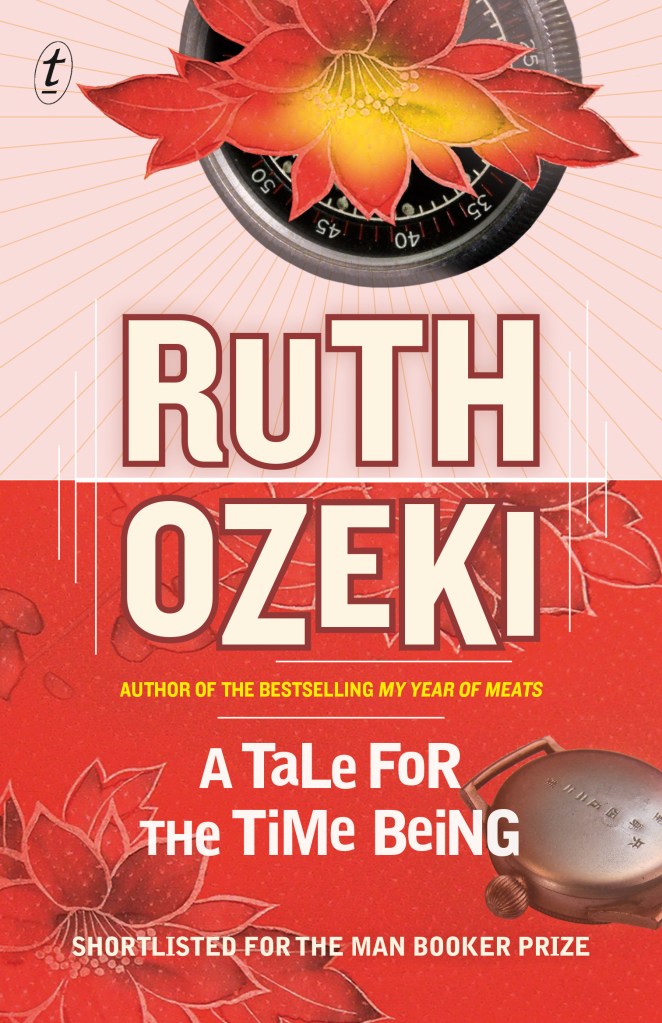
Book Review: The Book of Form and Emptiness by Ruth Ozeki
“Stories never start at the beginning, Benny. They differ from life in that regard. Life is lived from birth to death, from the beginning into an unknowable future. But stories are told in hindsight. Stories are life lived backward.” (The Book of Form and Emptiness)
I remember being thrilled to hear Ruth Ozeki speak about her Booker shortlisted novel A Tale for the Time Being at the Brisbane Writers Festival in 2013. The audience was full of literary fiction lovers. Heads nodded in recognition of kindred spirits.

I seek out novels by Japanese authors (Ozeki’s mother is Japanese) and beautifully conceived novels set in Japan such as A Tale for the Time Being by Ozeki, The Snow Kimono by Mark Henshaw (Text Publishing, which I have reviewed), Dreams of Speaking by Gail Jones, The Thousand Autumns of Jacob de Zoet by David Mitchell, The Crane Wife by Patrick Ness and the novels of Liane Moriarty and Haruki Murakami.
Naturally I prioritised reading Ozeki’s new novel, The Book of Form and Emptiness (Text Publishing). While not set in Japan, it has some Japanese content. It seems despairing yet is an elating and highly memorable novel, with intriguing conceits and fascinating, unconventional characters and relationships.
Young Benny Oh hears books speaking. When his Japanese jazz musician father is hit by a truck and dies, his life with his mother Annabelle unravels. Annabelle spirals downhill: her mental and physical health fade, she is overweight and overbuys, she hoards and is threatened with eviction. Benny also deteriorates, experiencing auditory hallucinations and becoming the ‘ostracized Other’ at high school.
Annabelle wanted to be a children’s librarian but she is caught in a dead-end, diminishing job. Benny always loved the Public Library and starts spending his days there instead of attending school. He ‘relearns’ how to read books and is cocooned there.
The books watch Benny, and the Book itself is a major narrator. It is personified. Benny speaks to it, and it replies. It regards reading as a collaboration and explains that books need to be embodied by their readers and that a book can live inside another book.
Books like each other. We understand each other. You could even say we are all related. Enjoying a kinship that stretches like a rhizomatic network beneath human consciousness and knits the world of thought together. Think of us as a mycelium, a vast, subconscious fungal mat beneath a forest floor, and each book a fruiting body. Like mushrooms, we are a collectivity.
Annabelle finds the book, Tidy Magic: The Ancient Zen Art of Clearing Your Clutter and Revolutionizing Your Life. Written by a Zen monk, it is an ironic book within the book.
When Benny peeks at the books that a woman in the library is reading, he finds a typed message on a slip of paper inside Grimm’s Fairy Tales.
Hansel and Gretel are alive and well, and they’re living in Berlin.
Following the clue, Benny finds the relevant book as well as another message, which sends him on a quest through the library and to the mysterious Bindery.
He discovers the Angelus Novus, meets The Aleph (named from a Borges short story) and the Bottleman, a hobo poet.
The Book of Form and Emptiness is philosophical, metafictive, surreal and real. On one hand it is a paean to books but it is more a wise, unwieldy and warm celebration of people as they seek their place in the world and find their voice. It is a maverick love story.
Thank you to Text Publishing for the review copy of The Book of Form and Emptiness.

Have you read A Man by Keiichiro Hirano or The Phone Booth at the Edge of the World by Laur Imai Messina. These two introduced me to Japanese fiction (and really opened my eyes).
LikeLiked by 1 person
No I haven’t Paul. They look fascinating. Thanks, I appreciate hearing about them.
LikeLike
Reblogged this on and commented:
The Book of Form and Emptiness by Ruth Ozeki shortlisted for the Women’s Price for Fiction. My book review.
LikeLike